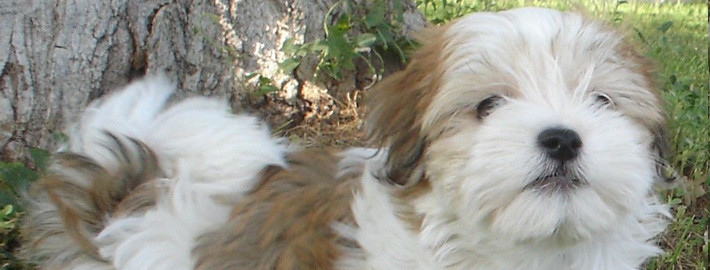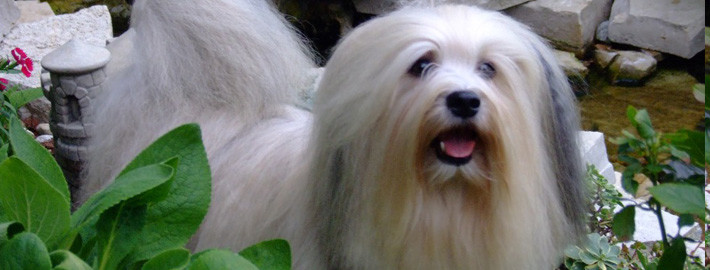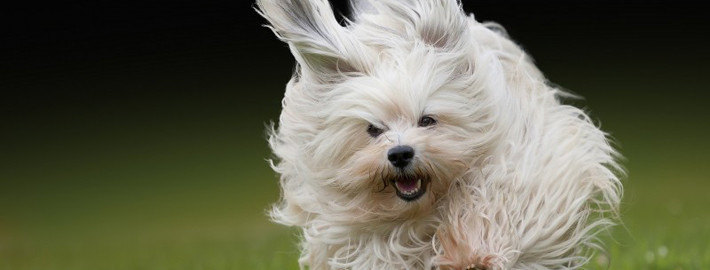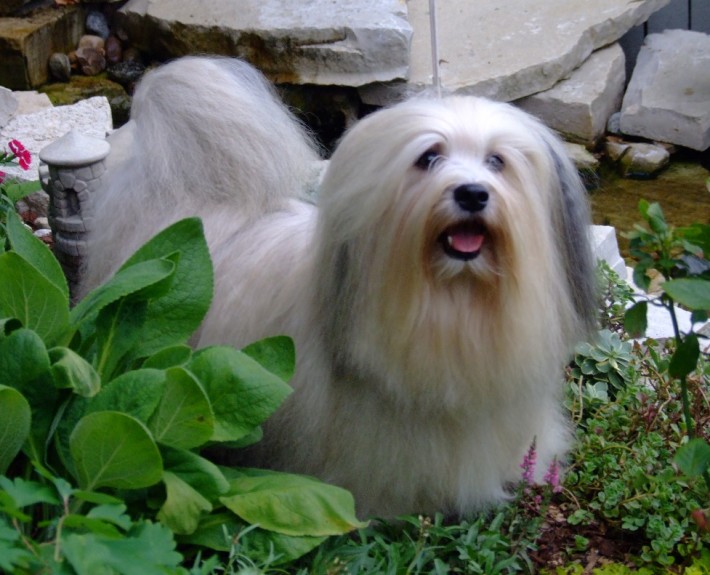What makes the Havanese Unique?
Although members of this Cuban breed were once seen as part of circus acts, these friendly and intelligent individuals have a promising future career as family pets.
Breed Groups
Page Contents
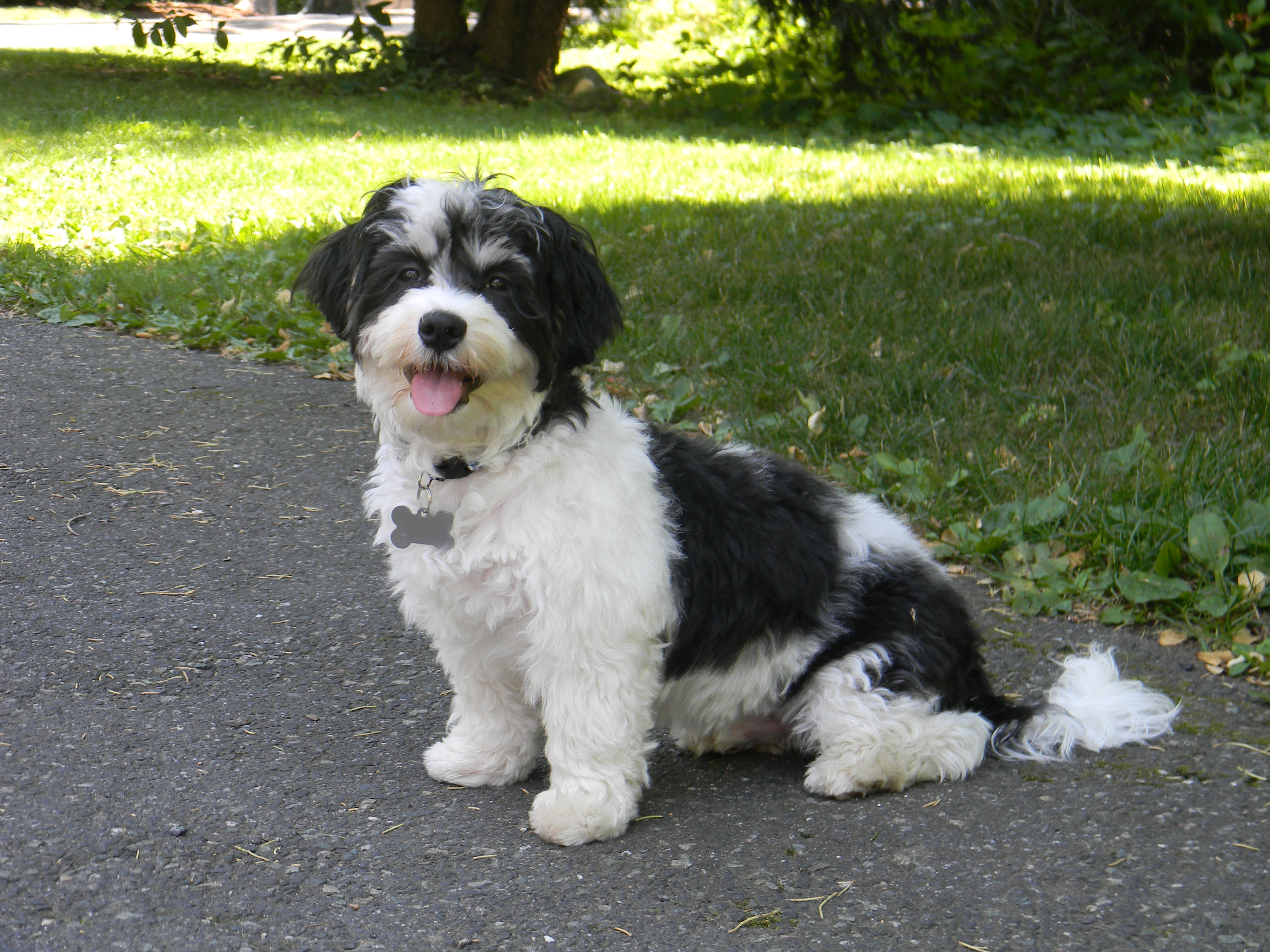
Is the Havanese Right For You?
This sociable breed gets along great with human beings of all ages as well as other animals that are part of their households. Havanese dogs tend to follow their owners wherever they go but they will get along just fine with unfamiliar people. In fact, members of this breed truly enjoy being the center of attention. Havanese dogs are eager to please and can easily be trained to perform a wide variety of tricks, a trait that allowed a number of them to become circus animals in earlier decades.
In 5 Words
- Playful
- Responsive
- Intelligent
- Gentle
- Companionable
Characteristics
Learn About the Havanese
Description
General Description
Havanese dogs are small, sturdy, and short-legged. Members of this breed move with a particularly bouncy gait that is one of their characteristic habits. These cheerful little dogs possess almond shaped eyes that are dark in color and that often contain a placid but intelligent expression. These dogs have broad, square shaped noses and high set, moderately long ears. The teeth on members of this breed should meet in a scissor bite. Their plumed tails should be carried high and form an arc over their backs. Members of this breed should not have curly tails.
Size
These dogs should be between 8.5 and 11.5 inches in height.
Coat
Havanese dogs have long hair on their faces, which helps protect them from the incredibly sunny conditions of their homeland. They also have double coats. Unlike many breeds with this feature, both of the layers in question are quite soft and silky to the touch. The outer layer of their fur measures about 7 inches in length. It can range in texture from fairly curly to perfectly straight. However, wavy fur is considered preferable on members of this breed. Dogs with curly hair are allowed to wear their fur in cords. Havanese dogs are available in a wide variety of colors.
Prospective owners should note that shorter coated version of the breed can be seen from time to time, due to the presence of a recessive gene that is found in some animals. These dogs have long, fringed fur in a variety of locations but they also have thin coats on the rest of their bodies. While this characteristic does not affect the health of the animal in question, these dogs are not allowed to be shown so owners may want to keep this in mind when making their final selections.
Short History of the Havanese
Members of the Havanese breed are the modern day descendants of an extinct dog variety called the Havanese Silk Dog or the Blanquito de la Habana, which had been created using Bichons that had made their way from Europe to the Caribbean during the 17th century. The Havanese Silk Dogs were known to be smaller than their predecessors and they also had silkier coats. Around the 19th century, poodles were introduced to the breed’s existent bloodlines. This helped create the modern dog variety, which then called the Bichon Havanese. The dogs subsequently became popular pets in their homeland during the years that followed, but their numbers dwindled and the breed became increasingly rare after the Cuban revolution. However, a number of the Havanese dog were brought to the United States by immigrants who had moved to the country in the 1960s and 1970s. Using some of these animals as breeding stock, an American woman named Ms. Goodale helped keep the Havanese from becoming extinct at that time. The dogs have since been recognized by the United Kennel Club (UKC) in 1991, the American Kennel Club (AKC) in 1996, and the Canadian Kennel Club (CKC) in 2001.
Temperament
Members of the Havanese breed make great family pets. These little dogs are intelligent, friendly, affectionate, and playful. This sociable breed gets along great with human beings of all ages as well as other animals that are part of their households. Havanese dogs tend to follow their owners wherever they go but they will get along just fine with unfamiliar people. In fact, members of this breed truly enjoy being the center of attention. Havanese dogs are eager to please and can easily be trained to perform a wide variety of tricks, a trait that allowed a number of them to become circus animals in earlier decades. Shyness or nervousness is rarely seen in these animals. However, as is the case with most breeds, these dogs can be noisy at times, such as when people arrive at the door.
Caring for Your Havanese
General Health
Havanese dogs are a long lived and fairly healthy breed. Even so, pet owners should keep an eye out for ailments such as cataracts, patellar luxation, progressive retinal atrophy, heart diseases, and liver problems, which do occasionally appear in members of this breed.
Care
Daily
Havanese dogs need regular exercise in order to prevent behavioral issues from arising and to keep them from becoming overweight. Although they are small, they are quite an energetic breed. Their workouts can take the form of a daily walk, a play session with their human owner, or simply a chance to run around in a safely fenced area. It is also recommended that pet owners wipe their Havanese dog’s face once a day with a damp rag in order to get rid of the tear stains that are so often found on members of this breed.
Weekly
Dental problems tend to plague many small dog breeds, including the Havanese. Therefore, brushing your pet’s teeth a few times per week, if not every day, is the best way to keep it in good oral health.
Monthly
All dogs need parasite prevention medications to keep harmful pests at bay and these products are generally administered at least once per month.
Grooming & Bathing
Havanese dogs typically have long, silky fur but their coats can be kept clipped short if the dog in question is not going to be shown at breed events. Dogs with longer hair will have to be brushed on a daily basis to keep their fur free of mats and tangles. Regular baths are also recommended for these dogs. Some individual Havanese may even find themselves in the tub on a weekly basis. Pet owners will also need to keep their dog’s toenails trimmed and their dog’s ears cleaned out to keep the animal in question in the prime of health.
Exercise & Training
Due to their high intelligence levels and their consistent desire for human approval, training Havanese dogs is a comparatively easy feat. These individuals respond well to positive reinforcement techniques such as rewards and lavish praise for good behavior. However, members of this breed tend to pick up tones and inflections so pet owners should adjust their behavior accordingly in order to obtain good results.

